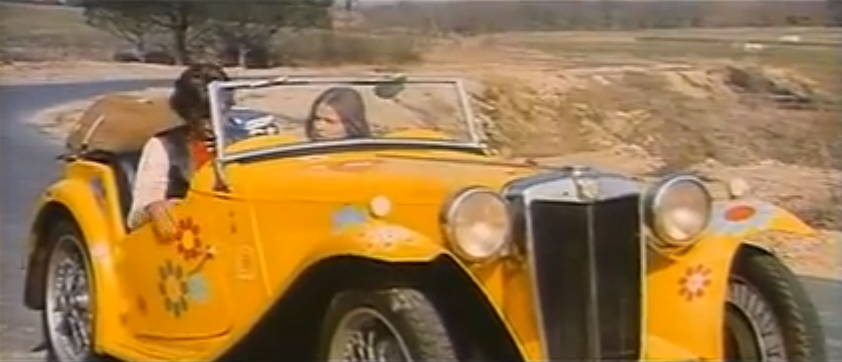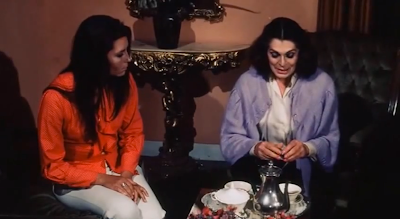An Ideal Place to Kill
"You're under the delusion that you can handle a delicate situation my yourself."
Dick Butler (Ray Lovelock) and Ingrid Sjorman (Ornella Muti) are a freewheeling young couple, paying for their romp through Europe by smuggling and selling porn out of their groovy yellow convertible. But after getting busted by the police in Pisa, getting robbed by a biker, and being mistaken for German bank robbers, the couple seeks refuge in a country estate. At first, the house's owner, Barbara Slater (Irene Papas), is terrified by her unwelcome guests but they soon charm her and things get very friendly. But what dark secrets is Barbara hiding? The situation quickly turns as Dick and Ingrid take Barbara prisoner in her own home... or is Barbara the one in control, keeping the young couple trapped for her own purposes?
An Ideal Place to Kill (also frequently called Oasis of Fear) gets rolling with a lot of potential, showing Dick and Ingrid's Bonnie-and-Clyde adventures, breezing through Europe and flaunting the law. Then it slows to a halt when the action is confined to Barbara's house. The movie has a few good moments of suspense and is sexy and stylish, but it's not a great giallo if you're into blood and murder scenes. The first murder occurs before the action of the movie starts and isn't revealed until 54 minutes in. The girl killed in a car accident is incidental to the plot and isn't shown. Instead, this movie aspires to be one of those claustrophobic mind-game suspense movies like The Cold Eyes of Fear or Sleuth but, sadly, doesn't achieve their sustained level of tension.
- The movie isn't great, but the cast is spectacular. You may remember Ray Lovelock, who would go on to star in Lucio Fulci's Murder Rock. Ornella Muti is best known as Princess Aura in 1980's Flash Gordon and Irene Papas was in Zorba the Greek, The Guns of Navarone, and Fulci's giallo Don't Torture a Duckling.
- This movie includes an excellent example of "inept police," too lazy to follow up an important lead in the garage after a simple distraction.
- There's a lot of yellow going on in the costumes and production design - the car, the clothes, the wallpaper, flowers, art... tons of yellow and gold. There's so much that it doesn't really serve a storytelling function (like in a Lamberto Bava movie), rather, it's a constant remind to the viewer that this is a giallo movie.
- The title makes ironic sense. Most of the other titles make more literal sense – except maybe for the Japanese video title, Love Stress.
What the Hell am I Watching?
Living free and flush with cash at the beginning of the movie, Dick and Ingrid celebrate life by going to a fancy restaurant and throwing birds at the other patrons.
Fashion Moment
During that drunken fowl-chucking escapade in the restaurant, the couple parties Donnie and Marie style in matching white fringed bell-bottom leisure suits.
Here's their awesome yellow roadster, covered in daisy decals.
...and one more point of interest: Do those yellow curtains look familiar? That swirling wrought iron bannister on a spiral staircase in a circular foyer? That's because this same house was used as a set for both Lucio Fulci's Perversion Story and Dario Argento's Cat O'Nine Tails.





















